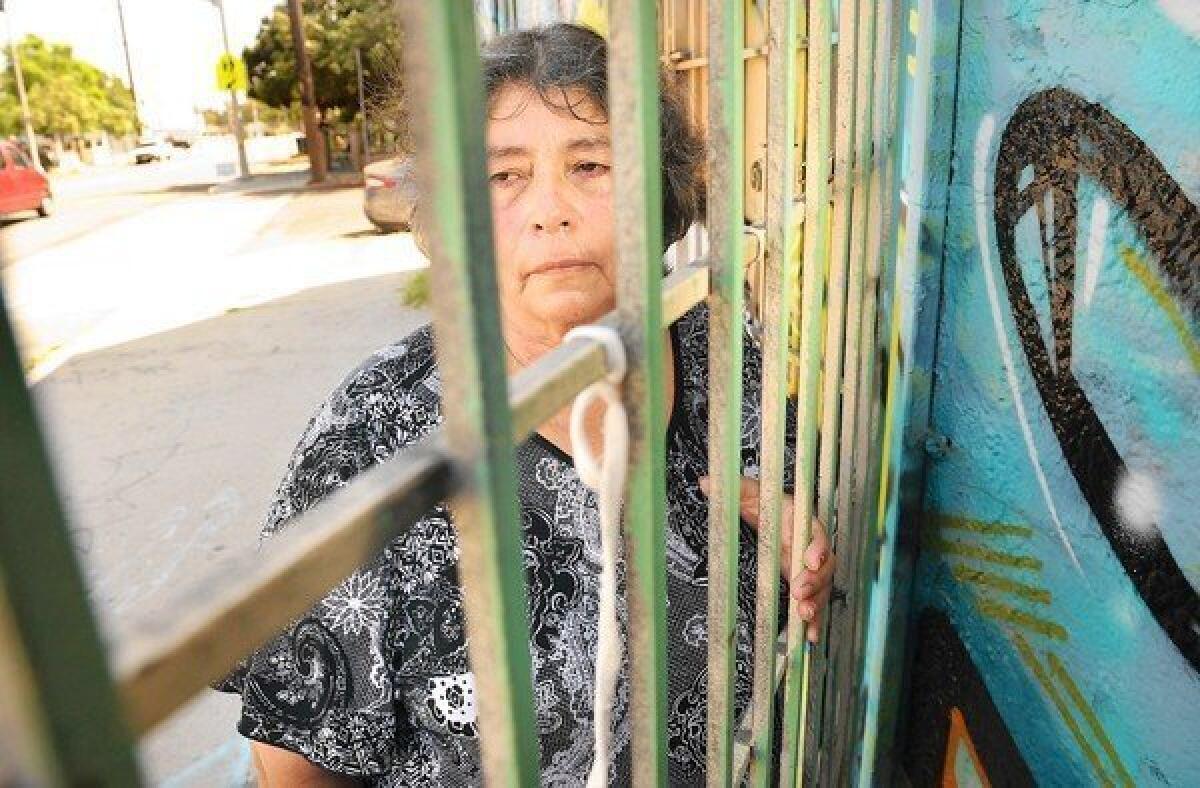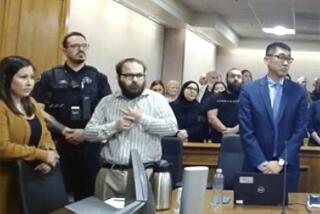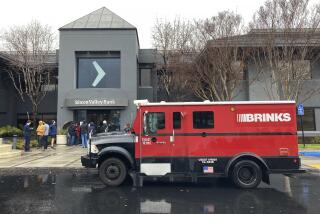LAPD cold-case probe of grocerâs 1990 slaying leads to arrest

Timoteo Pena emigrated from Durango, Mexico, in the 1970s and built a life based on the twin pillars of the American Dream: hard work and family.
He worked overnight shifts as a security guard, then peddled nuts, fruit and flowers to motorists near a 110 Freeway offramp in South Los Angeles.
It was tough work, but it paid the bills and Pena socked away enough money to open Sinaloa Meat and Grocery, a neighborhood store where he held court behind the cash register.
But on the evening of July 24,1990, a man armed with a handgun tried to rob Pena, who fired back at least once with a .22-caliber handgun he kept in his pocket. Pena was fatally wounded, while his terrified 9-year-old daughter hid behind a refrigerator.
For 23 years, the killing remained unsolved, until this week when Los Angeles police announced the arrest of Marcus Perkins, a felon twice convicted of robberies similar to the holdup of Penaâs grocery. Perkins was arrested Monday, shortly after being paroled from state prison on a 23-year sentence for attempted murder and robbery.
âFinally, justice has been served,â said Biatriz Garcia, one of Penaâs daughters. âFor so many years we were questioning ourselves that whoever did it was out there free. Now all of our questions are going to be answered.â
Perkins, who has been charged with murder, was long considered a suspect in Penaâs death. But the case was largely circumstantial.
On the night of the shooting near the intersection of San Pedro and 65th streets, witnesses saw a small, green, compact vehicle fleeing the scene. But they could not describe the suspect.
Shortly after Pena was shot, Perkins checked into Daniel Freeman Hospital for treatment of a gunshot wound. Hospital officials contacted the LAPD. Perkins told detectives he drove a green car, but denied involvement.
Without any concrete evidence or a strong eyewitness, Los Angeles County prosecutors declined to file murder charges.
Decades passed. Then in 2011 as part of a larger effort to revisit thousands of cold cases, LAPDâs Robbery-Homicide Division detectives reviewed the Pena case and sought forensics testing on items of clothing recovered from Perkins in 1990.
The tests turned up Penaâs blood on at least one of the items, physically linking Perkins to the killing, authorities said.
âThe Pena case represents thousands of crimes that occurred prior to law enforcementâs use of DNA technology,â said LAPD Robbery-Homicide Det. Tim Marcia, who investigated the case with Det. Mitzi Roberts. âFamilies during those years were left without answers and suspects remained free to continue their criminal ways. Now we have the technology to go back and right these wrongs.â
Despite relief at Perkinsâ arrest, Penaâs family said it has stirred up painful memories of his slaying.
Esmerelda Pena, 32, recalled the terrifying moments leading up to the shooting.
She had come to the store with a young friend to help her dad close up that July evening when she saw a man walk up to the register. Moments before the shooting, the 9-year-old had been skipping through the aisles. She briefly passed behind the alleged suspect, before heading into the back room.
She heard the first shot while she was perched on a milk crate, reaching for a bolt to lock the back door. She quickly scrambled behind a meat refrigerator with her friend.
âI ducked down with the little girl, covered her mouth and tried to see what was going on,â she said. âI saw my dad running toward outside. He was turning back and thatâs when he fell.â
Moments later, she saw her fatherâs lifeless body at the entrance to the store, a memory that still haunts her today.
âI can still see ... my dad lying down on the ground,â she said.
Although their father worked long hours to support the family, his daughters said, he found time for his children and they have many fond memories.
Some weekends, they would wake up before sunrise and accompany Pena to the downtown mart to pick out produce. He would regale them with stories and show them how to select the juiciest oranges.
After Pena died, Garcia said, her mother sold the store. And Garcia said she went out of her way to avoid walking past the old mercado.
Growing up was difficult without their father, but Penaâs daughters said they remained a close-knit family. The children all pitched in to help their mother, and the extended family still lives near the old store.
Her father would have liked it that way, Garcia said.
âHe always said to work hard and always take care of family.â
More to Read
Sign up for Essential California
The most important California stories and recommendations in your inbox every morning.
You may occasionally receive promotional content from the Los Angeles Times.










